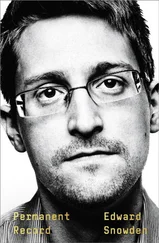It could take eight hours or more—entire shifts—to fill a card. And though I switched to working nights again, those hours were terrifying. There was the old computer chugging, monitor off. And there I was, turning the monitor back on every once in a while to check the rate of progress and cringing. You know the feeling—following the completion bar as it indicates 84 percent completed, 85 percent completed… 1:58:53 left… As it filled toward the sweet relief of 100 percent, all files copied, I’d be sweating, seeing shadows and hearing footsteps around every corner.
* * *
Execute: That was the third and final step. As each card filled, I had to run my getaway routine. I had to get them out of the building, past the bosses and military uniforms, down the stairs and out the empty hall, past the badge scans and armed guards and two-doored security zones in which the next door doesn’t open until the previous door shuts. And if anything goes awry, the guards draw their weapons and the doors lock you in and you say, Well, isn’t this embarrassing? This—per all the reports I’d been studying, and all the nightmares I’d been having—was where they’d catch me; I was sure of it. Each time I left, I was petrified. I’d have to force myself not to think about the SD card. When you think about it, you act differently, suspiciously.
One unexpected upshot of gaining a better understanding of NSA surveillance was that I’d also gained a better understanding of the dangers I faced. In other words, learning about the agency’s systems had taught me how not to get caught by them. The FBI—the agency that investigates all crime within the IC—took great pride in explaining exactly how they caught their suspects, and believe me, I didn’t mind benefiting from their experience. It seemed that in almost every case, the FBI would wait to make its arrest until the suspect had finished their work and was about to go home. Sometimes they would let the suspect take the material out into public, where its very presence was a federal crime. I kept imagining a team of FBI agents lying in wait for me—there, out in the public light, just at the far end of the Tunnel.
I’d usually try to banter with the guards, and this was where my Rubik’s Cube came in most handy. I was known to the guards and to everybody else at the Tunnel as the Rubik’s Cube guy, because I was always working the cube as I walked down the halls. I got so adept I could even solve it one-handed. It became a distraction device as much for myself as for my coworkers. Most of them thought it was an affectation, or a nerdy conversation starter. And it was, but primarily it relieved my anxiety. It calmed me.
I bought a few cubes and handed them out. Anyone who took to it, I’d give them pointers. The more that people got used to them, the less they’d ever want a closer look at mine.
I got along with the guards, or I told myself I did, mostly because I knew where their minds were: elsewhere. I’d done something like their job before, back at CASL. I knew how mind-numbing it was to spend all night standing, feigning vigilance. Your feet hurt. After a while, all the rest of you hurts. And you can get so lonely that you’ll talk to a wall.
I aimed to be more entertaining than the wall. There was the one guard I talked to about insomnia and the difficulties of day-sleeping (remember, I was on nights, so this would’ve been around two in the morning). Another guy, we discussed politics. What they all had in common was a reaction to my Rubik’s Cube: It made them smile. Over the course of my employment at the Tunnel, pretty much all the guards said some variation of, “Oh man, I used to play with that when I was a kid,” and then, invariably, “I tried to take the stickers off to solve it.” Me too, buddy. Me too.
It was only once I got home that I was able to relax, even just slightly. I was still worried about the house being wired—that was another one of those charming methods the FBI used against those it suspected of inadequate loyalty. Lindsay would go to bed, and I’d go to the couch, hiding with my laptop under a blanket because cotton beats cameras. With the threat of immediate arrest out of the way, I could focus on transferring the files to a larger external storage device via my laptop—only somebody who didn’t understand technology very well would think I’d keep them on the laptop forever. Then I’d lock them down under multiple layers of encryption algorithms using differing implementations, so that even if one failed the others would keep them safe.
I’d been careful not to leave any traces at my work and to make sure my encryption left no traces of the documents at home. Still, I knew the documents could lead back to me once I’d sent them to the journalists and they’d been decrypted. Any investigator looking at which agency employees had accessed, or could access, all these materials would come up with a list with probably only a single name on it: mine. The fact was that every individual file left me vulnerable, because all digital files contain metadata, invisible tags that can be used to identify their origins.
I struggled with how to handle this metadata situation. I worried that if I didn’t strip the identifying information from the documents, they might incriminate me the moment the journalists decrypted and opened them. But I also worried that by thoroughly stripping the metadata, I risked altering the files. And if they were changed in any way, that could cast doubt on their authenticity. Which was more important: personal safety, or the public good? It might sound like an easy choice, but it took me quite a while before I owned the risk and left the metadata intact.
I was forced, for the first time, to confront the prospect of discarding my lifetime practice of anonymity and coming forward to identify myself as the source. I would embrace my principles by signing my name to them and let myself be condemned.
Altogether, the documents I selected fit on a single drive, which I left out in the open on my desk at home. I knew that the materials were just as secure now as they had ever been at the office. Actually, they were more secure, thanks to the multiple levels and methods of encryption. That’s the incomparable beauty of the cryptological art, the basis of encryption. A little bit of math can accomplish what all the guns and barbed wire can’t; a little bit of math can keep a secret.
Most people who use computers think there’s a fourth basic permission besides read, write, and execute called delete.
Delete is everywhere on the user side of computing. It’s in the hardware as a key on the keyboard, and it’s in the software as an option that can be chosen from a drop-down menu. There’s a certain finality that comes with choosing delete, and a certain sense of responsibility. Sometimes a box even pops up to double-check: Are you sure? If the computer is second-guessing you by requiring confirmation—click Yes —it makes sense that delete would be a major decision.
Delete functions appeared from the very start of digital computing. Engineers understood that some choices would inevitably turn out to be mistakes. Users, regardless of whether or not they were really in control at the technical level, had to feel in control. If they made a file, they should be able to unmake it at will. The ability to destroy what they created and start over afresh imparted a sense of agency to the user.
Think about the reasons that you yourself press delete. On your personal computer, you might want to get rid of some document or some file you downloaded but no longer need—or some file you don’t want anyone to know you ever needed. On your phone, you might delete some of the pictures, videos, and private records it automatically uploaded to the cloud. In every instance, you delete, and the thing—the file—appears to be gone.
Читать дальше












